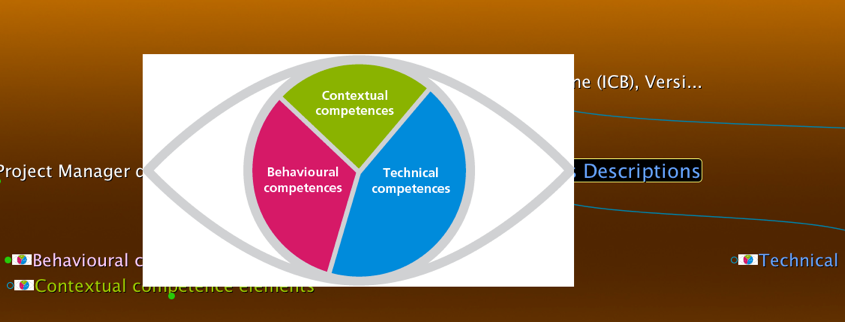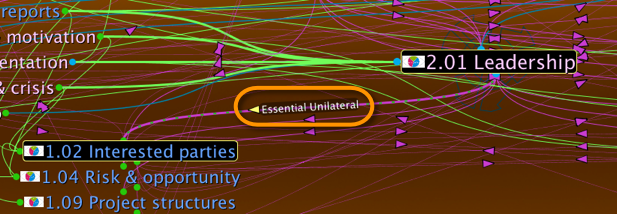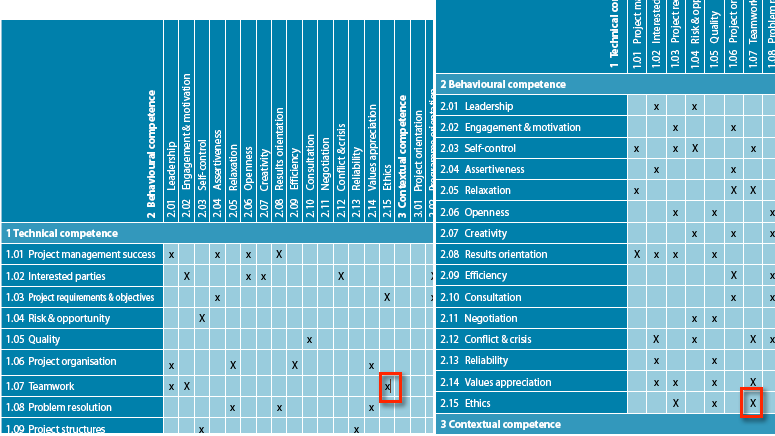IPMA Competence Baseline mapped
In the example we show you how we have taken The International Project Management Association (IPMA) Competence Baseline, short ICB and mapped and linked all the competence elements. We have used the most current version, being version 3.0. We use this section of "our Brain" as part of our training material and to be able to quickly jump to related competences and other thought. It sure helps understand the complexities, from a competence perspective, of being a project manager.
(click the images below to zoom in!)
The ICB has three types of competence elements, being behavioural, contextual and technical. For each we created a thought type and we gave each a colour similar to the so called "Eye of competence"
Clicking through to one of the competence elements we can now very quickly see the relationship between the competence elements
The ICB has defined two types of relationships between the competence elements. We use the jump link for the Reciprocal Relationship (bilateral). By colouring it green and increasing the thickness slightly these stick out a bit more.
The second type of relationship is "Essential Unilateral". In this case we have used a child link and changed the link direction as can bee seen by the directional arrows. When highlighting a thought/competence element the link lights up and is animated showing the direction of flow.
Since we have added the ICB to an existing Brain we can link to related existing thought as shown below with the "2.01 leadership" thought
Clicking on "Leadership" we see all the other thought that are linked to it and we quickly find related material. For instance a book called "Leadership". We know it is a book because of the thought type and the associated icon we added.
As source for the relationship mapping we have used Appendix 2 of the ICB and the tables/matrices on pages 186 - 189. Doing that allowed us to identify a few mistakes/contradictions as highlighted below.
Elements can not have bidirectional "unilateral" relationships!
Is it a "reciprocal" or a "unilateral" realtionship?
Please contact us if you like to know more about this Brain or IPMA's Competence Baseline.











